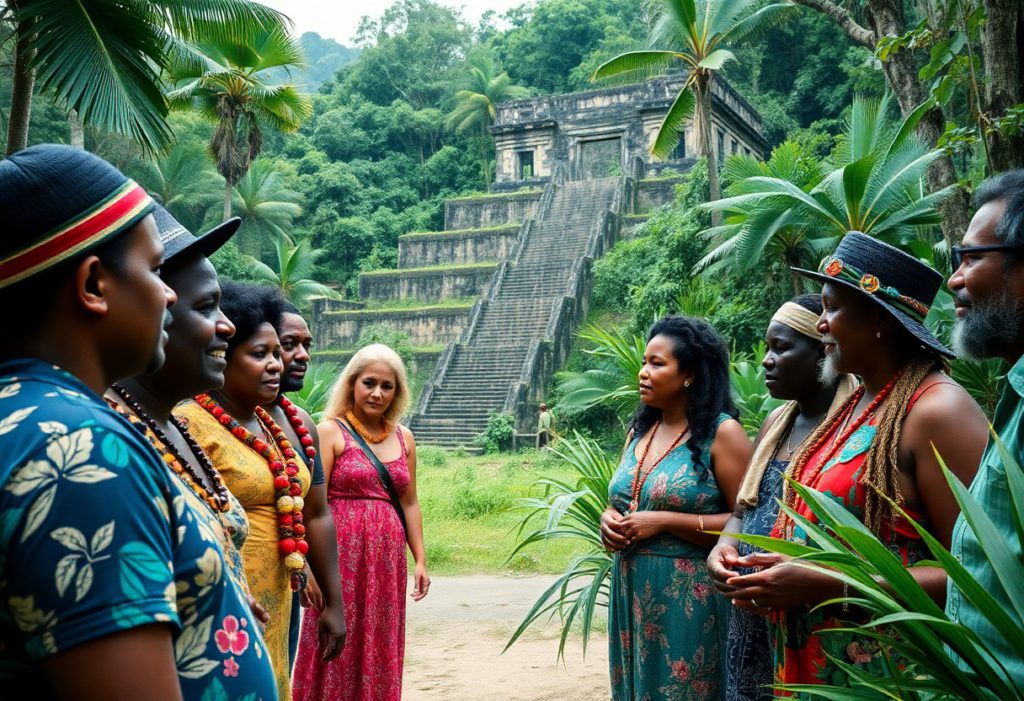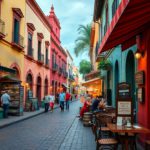Over the centuries, Belize has transformed into a stunning travel destination, enchanting visitors with its unique combination of cultural richness and awe-inspiring natural marvels. Travelers are invited to explore a nation where English serves as the official language, yet a vibrant spectrum of linguistic diversity thrives among Creole, Spanish, and Mayan communities. This exploration reveals a captivating historical tapestry that encompasses ancient Mayan civilizations, the lasting effects of British colonialism, and a lively modern identity infused with customs and traditions. Belize’s ecological variety is equally impressive, featuring unique ecosystems such as the world’s second-largest barrier reef and dense tropical rainforests bustling with endangered species. From its linguistic diversity to its spectacular natural treasures, Belize presents an unmatched adventure that embodies the true essence of Central America.
Experience the Vibrant Linguistic Diversity of Belize
Belize is known for its rich tapestry of linguistic diversity, showcasing a remarkable multilingual environment that mirrors its rich cultural heritage. This lively Central American nation boasts a harmonious coexistence of various languages, turning communication into a dynamic and engaging experience. The diverse linguistic landscape not only enhances social interactions but also enriches the cultural fabric of Belize, inviting visitors to connect with its diverse communities and immerse themselves in their vibrant traditions and daily lives.
Understanding the Role of English in Belizean Culture
Central to Belize’s linguistic diversity is English as the official language, a heritage stemming from its colonial past under British rule. You’ll observe that English is predominant in government, education, and media, acting as a crucial unifying element for the nation’s diverse populace. This widespread use of English facilitates communication among various ethnic groups, fostering mutual understanding and nurturing a sense of national identity that transcends cultural barriers. The significance of English also simplifies travel for international tourists, enhancing Belize’s appeal as a friendly and accessible destination.
Exploring the Impact of Spanish on Belize’s Cultural Fabric
The linguistic landscape of Belize is further enriched by the presence of Spanish, primarily spoken by Hispanic communities and immigrants from surrounding nations. Noticeable Spanish-speaking populations thrive, particularly in border areas and urban centers, contributing to the vibrant cultural mosaic of the country. As the second most widely spoken language, Spanish is pivotal in linking Belize with its Central American neighbors, promoting cultural exchanges and fostering cross-border relationships. This linguistic influence not only enhances the cultural landscape but also allows for a seamless blend of traditions and practices, reflecting the historical connections within the region.
Discovering the Distinctive Nature of Belizean Creole
Belizean Kriol, often called Spanish Creole, embodies a distinct linguistic fusion that permeates the nation. This language has developed through historical interactions between African and European populations, encapsulating the essence of Belize’s multicultural identity. For many Belizeans, Creole is a primary means of communication, reflecting the dynamic cultural exchanges that shape the nation. It is a lively and expressive language, rich in history, conveying unique stories and experiences from Belize’s diverse communities.
Exploring the Rich Heritage of Garifuna Language and Culture
As we delve deeper into Belize’s linguistic diversity, we find that Garifuna represents another intriguing language community worthy of exploration. Spoken by indigenous groups along the southern coast, Garifuna holds significant cultural importance, symbolizing the resilience and heritage of Afro-indigenous populations. This language acts as a means to preserve cherished traditions, songs, and historical narratives that contribute to the vibrant cultural tapestry of Belize. The artistic expressions of the Garifuna people, including their music and dance, further enhance the cultural offerings of this diverse nation, establishing it as a unique cultural hub.
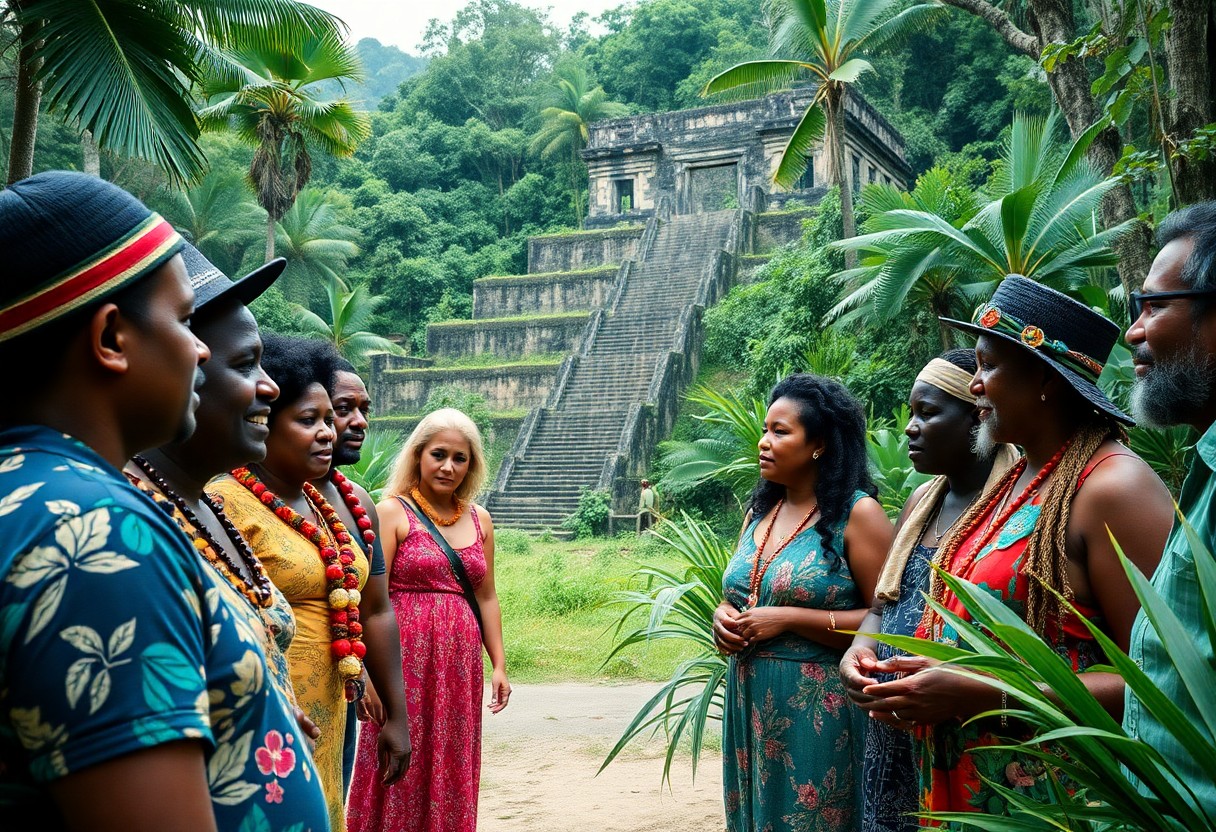
Investigating Belize’s Rich Colonial Legacy and Path to Sovereignty
Belize’s colonial history is a multifaceted narrative shaped by European influence and indigenous resilience. Originally claimed by Spain, the area came under significant control of British settlers, who established logging settlements that transformed the region into a vital outpost. These British colonizers laid the foundation for economic systems centered around timber extraction, ultimately leading to the formal establishment of British Honduras as a colony in 1862. This historical context offers valuable insight into the socio-political dynamics that have influenced modern Belize, shaping both its governance and cultural identity.
Understanding the Historical Significance of British Honduras
During its time as British Honduras, Belize experienced a unique fusion of cultural interactions that significantly influenced its identity. You would notice the coexistence of British settlers with Maya populations, descendants of African slaves, and various ethnic groups, resulting in a richly diverse social fabric. The colonial era was marked by significant demographic shifts, with economic activities evolving from logging to agriculture, contributing to the nation’s multifaceted identity. This remarkable history provides essential context for understanding the modern Belizean identity, reflecting the influences of various cultural narratives that coexist within the nation today.
Charting Belize’s Path to Independence
Alongside the political movements of the mid-20th century, Belize’s journey to independence was characterized by diplomatic negotiations and regional tensions. You’ll discover how influential political figures, such as George Price, skillfully navigated complex international relationships, particularly with Guatemala, which laid territorial claims on Belizean land. The path to independence was fraught with challenges, involving discussions with both the British government and neighboring countries. The successful achievement of independence on September 21, 1981, marked a peaceful transition from over a century of British colonial rule, showcasing the strategic diplomacy and national determination that defined Belize’s emergence as a sovereign nation.
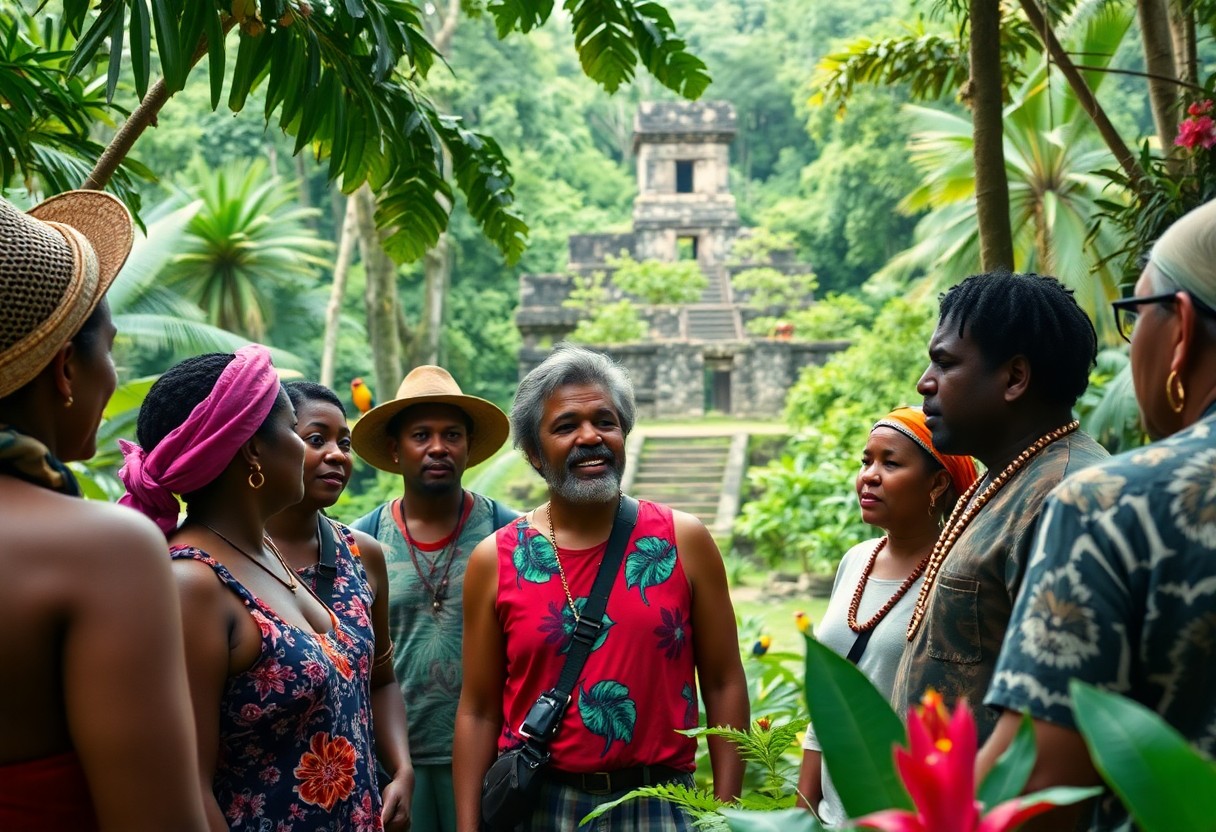
Examining Belize’s Extraordinary Ecosystems and Biodiversity
In Belize, nature reveals an astonishing array of ecological diversity that is truly unmatched anywhere else around the globe. The geographic location of the country fosters a remarkable intersection of ecosystems, ranging from coastal marine environments to dense tropical forests. You’ll uncover landscapes that seamlessly blend Caribbean marine habitats with lush inland terrains, offering a stunning ecological experience that positions Belize as a global biodiversity hotspot. This unique combination of environments invites exploration and appreciation of nature’s intricate beauty, revealing the delicate balance of ecosystems that thrive in this vibrant nation.
Unraveling the Wonders of the Belize Barrier Reef
As you explore Belize’s stunning coastline, prepare to be astonished by the world’s second-largest barrier reef system, spanning approximately 300 kilometers. This magnificent marine ecosystem boasts a remarkable variety of coral formations, providing habitats for thousands of marine species. Your underwater adventures will reveal vibrant coral gardens, intricate underwater landscapes, and a complex marine environment that supports both ecological balance and breathtaking visual diversity. Preserving this reef system is critical for maintaining marine health and promoting sustainable tourism, ensuring that future generations can enjoy its wonders.
Immersing Yourself in Belize’s Lush Tropical Rainforests
Central to Belize, tropical rainforests encompass nearly 60% of the country’s land area. You’ll find yourself surrounded by lush, verdant landscapes teeming with exotic flora and fauna. These forests represent a vital ecological zone, offering refuge to numerous endangered species while supporting crucial environmental processes. To truly appreciate Belize’s rainforests, it’s important to understand their complex ecological structure. These multilayered ecosystems contain diverse vegetation strata, from the forest floor to the towering canopy above. You’ll uncover intricate relationships between plants, insects, mammals, and microorganisms that create a delicate web of life, demonstrating the invaluable role rainforests play in regulating climate and providing essential resources.
Discovering the Incredible Wildlife Diversity of Belize
The convergence of reefs and forests creates an extraordinary wildlife sanctuary where you’ll encounter remarkable species diversity. Belize is home to over 500 bird species, countless mammals, and an impressive selection of reptiles and amphibians. Your journey through these diverse ecosystems will reveal a living museum of biodiversity. However, Belize’s wildlife represents more than just a tally of species; these ecosystems play a crucial role in global conservation efforts. You’ll discover endangered species such as jaguars, howler monkeys, and various marine mammals finding refuge in these protected environments. The intricate balance of predator-prey relationships, migration patterns, and habitat preservation positions Belize as a global model for ecological conservation and biodiversity management.
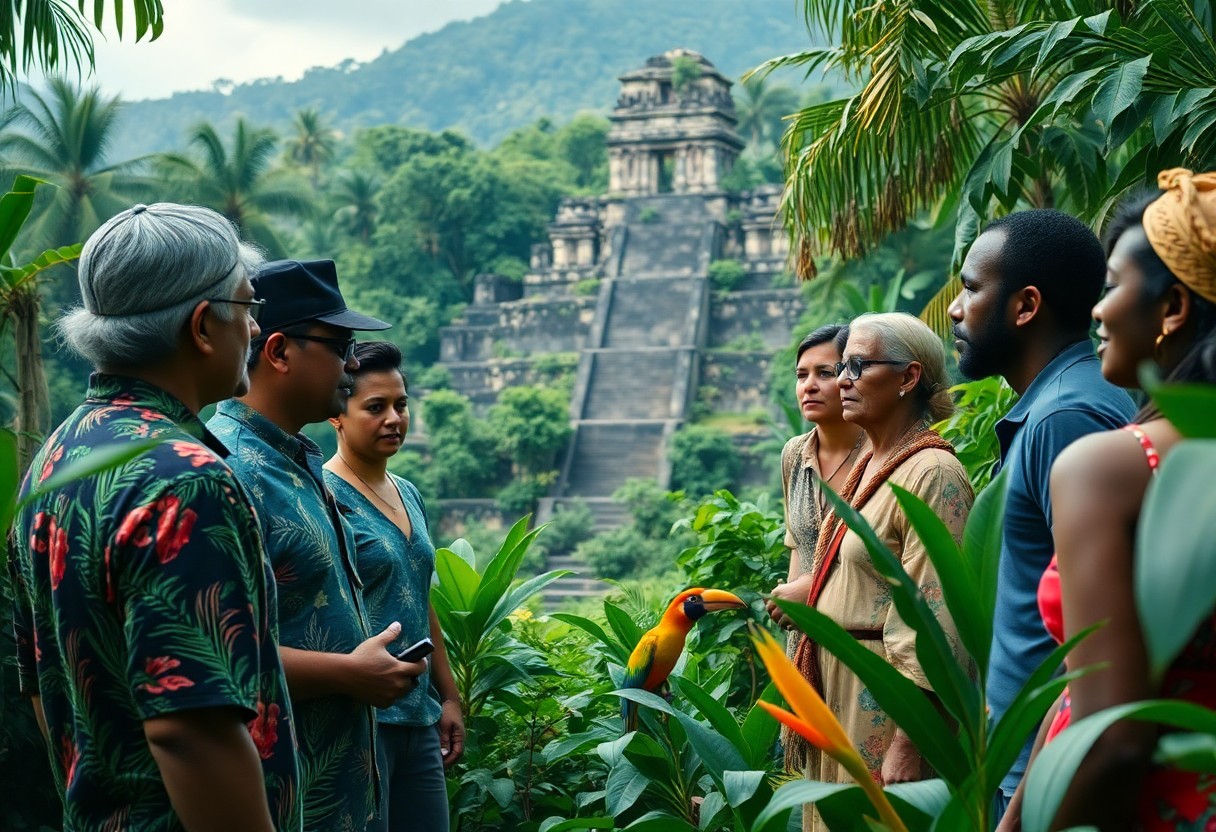
Celebrating the Cultural Richness of Belize
Despite its modest size, Belize proudly showcases a rich tapestry of ethnic diversity, featuring a remarkable blend of cultures, including Creole, Garifuna, Maya, Mestizo, and descendants of European settlers. Visitors can explore a society where multiple languages coexist and traditions intermingle, creating a unique national identity that celebrates differences while fostering social harmony. This multicultural landscape provides an extraordinary glimpse into how diverse communities can coexist and flourish together, enriching the national narrative and contributing to the overall cultural richness of Belize.
Engaging in Colorful Multicultural Festivals
No visitor to Belize can miss the vibrant and lively festivals that celebrate the nation’s rich cultural heritage. You will experience festivities like Garifuna Settlement Day, where traditional music, dance, and historical reenactments unite communities in a magnificent display of cultural pride and unity. These festivals not only offer entertainment but also serve as vital platforms for preserving cultural traditions, allowing both locals and tourists to engage deeply with Belize’s vibrant cultural identity and heritage.
Savoring the Unique Flavors of Belizean Cuisine
The culinary landscape of Belize reflects its multicultural roots, offering you a delicious fusion of flavors influenced by various ethnic traditions. You’ll encounter dishes that blend Maya, Creole, Caribbean, and Central American influences, creating a unique gastronomic journey that delights your palate. A deeper dive into Belizean cuisine reveals extraordinary culinary traditions that are one-of-a-kind. You’ll discover local specialties such as gibnut (a local game meat), rice and beans with stewed chicken, and seafood delights that showcase the country’s diverse cultural influences. Each recipe tells a story of migration, adaptation, and cultural exchange, adding depth and meaning to your culinary exploration.
Experiencing the Vibrant Sounds of Belizean Music
Above all, Belizean music serves as a dynamic expression of cultural fusion. You’ll encounter rhythms that blend Caribbean, African, and Latin American influences, creating a unique soundscape that reflects the nation’s diverse heritage. For instance, you’ll be captivated by the rich musical traditions of Belize, which encompass genres like Punta, Brukdown, and Reggae. These musical styles not only provide entertainment but also play a crucial role in preserving cultural memories and narratives, serving as powerful mediums for cultural expression and identity in Belize.
Discovering Belize’s Tourism Potential and Natural Wonders
Many travelers flock to Belize due to its stunning blend of natural beauty and cultural depth. You’ll find a destination that offers unparalleled tourism experiences, from pristine Caribbean beaches to lush tropical rainforests. The country’s varied landscape presents visitors with unique opportunities to explore ancient Mayan ruins, vibrant marine ecosystems, and breathtaking national parks that highlight Belize’s remarkable biodiversity. This combination of natural and cultural attractions establishes Belize as a must-visit destination for adventure seekers and culture lovers alike.
Embarking on Exciting Adventure Tourism in Belize
Tourism in Belize transforms the aspirations of adventure seekers into exhilarating experiences. You can explore world-class cave systems, navigate challenging jungle terrains, and participate in thrilling activities such as zip-lining, river kayaking, and mountain biking. The varied topography of Belize ensures that you’ll encounter heart-pounding adventures that challenge your limits while immersing you in stunning natural environments. Each experience not only provides excitement but also fosters a deeper connection with Belize’s breathtaking landscapes and diverse ecosystems, enriching your travel journey.
Championing Eco-Tourism for Sustainable Exploration in Belize
Across Belize, eco-tourism represents a sustainable approach to discovering the nation’s extraordinary natural treasures. You’ll find carefully managed conservation areas that protect rare wildlife and preserve fragile ecosystems, offering immersive experiences that connect you directly with the intricate systems of nature. With a strong commitment to environmental stewardship, Belize emerges as a global leader in sustainable tourism. You’ll discover numerous protected areas, such as the Cockscomb Basin Wildlife Sanctuary, which provide unparalleled opportunities to observe diverse wildlife, including jaguars, tropical birds, and unique plant species. The country’s dedication to maintaining ecological balance ensures that your visit supports conservation efforts while delivering unforgettable, responsible travel experiences.
Addressing Challenges and Promoting Preservation
Despite its breathtaking natural beauty, Belize grapples with significant challenges that threaten its ecological and cultural integrity. Environmental degradation, economic pressures, and global climate change pose serious risks to the country’s delicate ecosystems and social structures. You’ll discover that addressing these challenges requires strategic, comprehensive approaches to safeguard and sustain Belize’s unique natural and cultural heritage. Ongoing efforts to tackle these issues are essential for the future well-being of Belize and its people, underscoring the necessity for collective action and awareness.
Identifying Environmental Threats to Belize’s Biodiversity
The preservation of Belize’s biodiversity has become increasingly complex and urgent. Deforestation, coral reef bleaching, and rising sea levels directly threaten your understanding of the country’s environmental vulnerability. It’s crucial to recognize that these threats endanger not only wildlife but also the entire ecological balance of this remarkable nation. Understanding these challenges is vital for developing effective conservation strategies that ensure the survival of Belize’s unique ecosystems and the myriad forms of life they support.
Maintaining Cultural Heritage in a Globalized World
For Belize, preserving cultural diversity is a delicate balancing act in an increasingly globalized world. Indigenous languages, traditional practices, and multicultural identities face the risk of erosion amid pressures from modernization. You’ll observe how communities are actively engaged in protecting their unique heritage against these challenges. Cultural preservation goes beyond mere conservation. Active community engagement, educational initiatives, and intergenerational knowledge transfer are essential strategies you’ll witness in practice. Young Belizeans are increasingly becoming champions of their cultural narratives, documenting languages, reviving traditional crafts, and celebrating the rich tapestry of their multiethnic society. This proactive approach ensures cultural continuity while allowing for dynamic, contemporary expressions of identity.
Discovering Belize: A Unique Destination Rich in Diversity
Ultimately, you’ll uncover that Belize stands as a remarkable destination where linguistic diversity, profound historical layers, and extraordinary ecological landscapes converge. You can appreciate how its unique blend of English, Spanish, Kriol, and Mayan languages reflects its complex cultural heritage. Your exploration unveils a country where ancient Mayan civilizations intersect with colonial influences and vibrant modern identities. As you delve into Belize’s biodiversity, you’ll discover an ecological treasure trove featuring pristine rainforests, coral reefs, and an impressive array of wildlife, positioning this small nation as a global conservation jewel. Understanding Belize means recognizing its extraordinary ability to preserve cultural complexity while maintaining ecological integrity, inviting you to experience the magic of this unique Central American paradise.
Your Essential Questions About Belize Answered
Q: What linguistic features distinguish Belize from other Central American nations?
A: Belize is unique as the sole English-speaking country in Central America, with English recognized as its official language. While Spanish, Kriol, and Mayan languages are also prevalent, English reflects the nation’s historical ties to British colonial heritage. This linguistic distinction facilitates international communication and sets Belize apart from its neighboring Spanish-speaking countries, enhancing its attractiveness to tourists.
Q: How does Belize’s historical narrative compare to other countries in the region?
A: Belize’s history is remarkable as it was the only British colony in Central America, achieving independence in 1981. Unlike its neighbors, Belize enjoyed a peaceful transition from British rule and has maintained a democratic governance system. The country’s multicultural fabric, comprising Creole, Garifuna, Maya, and Mestizo populations, creates a rich and varied social landscape that distinguishes it from other regional countries, offering a unique perspective on colonial history.
Q: What makes Belize’s biodiversity particularly significant on a global scale?
A: Belize boasts exceptional ecological diversity, with approximately 60% of its land area designated as protected wilderness. The Belize Barrier Reef, the second-largest coral reef system in the world, supports incredible marine biodiversity, making it a vital area for conservation efforts. Additionally, the country’s rainforests provide sanctuary to numerous endangered species, such as jaguars, howler monkeys, and countless tropical birds, solidifying Belize’s status as a global hotspot for conservation and ecological research, crucial for the health of our planet.
The Article What Makes Belize Unique? Language, History, and Biodiversity appeared first on Belize Travel Guide
The Article Belize’s Unique Language, History, and Biodiversity Explained Was Found On https://limitsofstrategy.com
The Article Belize’s Language, History, and Biodiversity Uncovered First Appeared ON
: https://ad4sc.com
